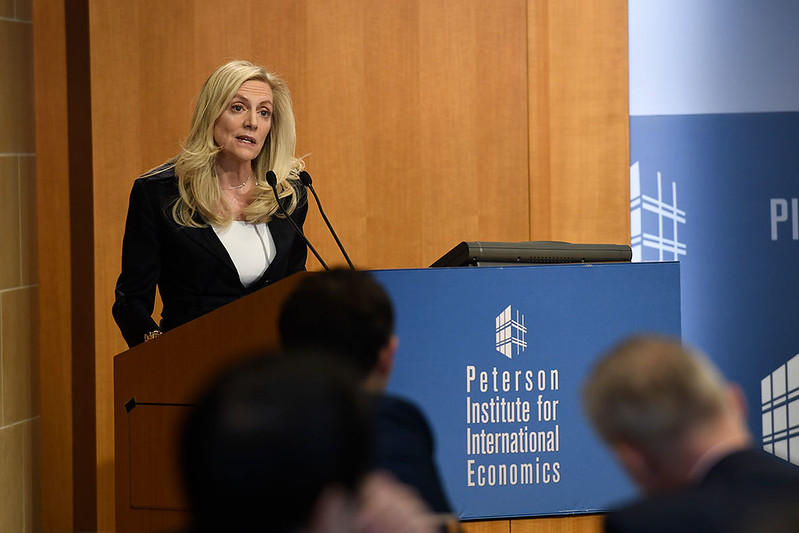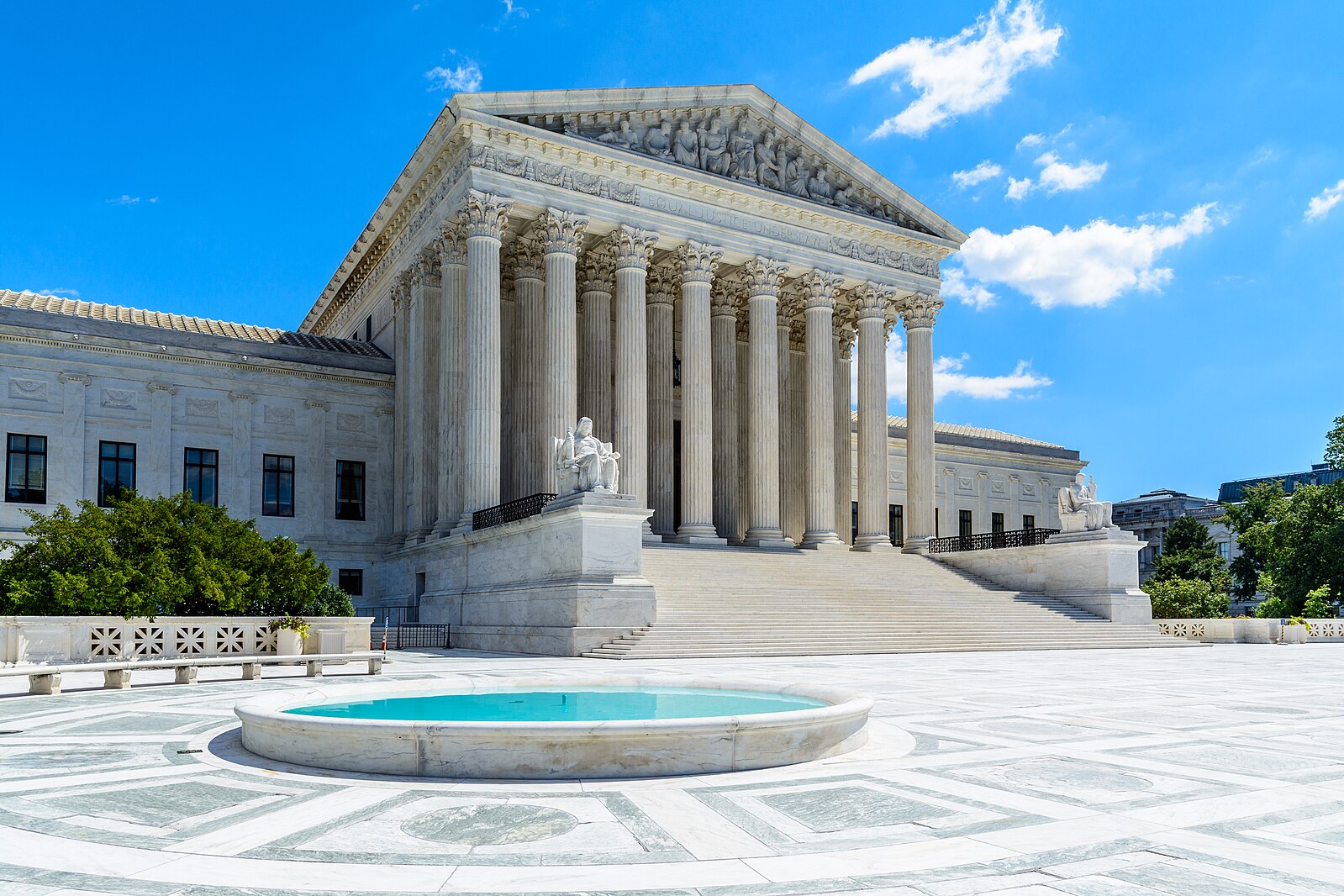The Federal Reserve Considers the Economics of Climate Change in 2020
Addressing the national and international economic effects of climate change has become crucial to the Fed’s mission.

Published by The Lawfare Institute
in Cooperation With

Economic stability and action on climate change have often been understood as incompatible with one another. But the opposite is the case. Instead, the first days of 2020 have emphasized the crucial connection between economic and climatic stability: BlackRock joined the Climate Action 100+ group to pressure fossil fuel companies to make disclosures and emissions reduction pledges, U.S. Chamber of Commerce CEO Tom Donohue called for action on climate change, and Australia is beginning to realize the long-term economic damage that will result from the bush fires currently burning through the country. In addition, the Federal Reserve in the United States has begun to dedicate significant resources to this question, holding its first conference specifically to discuss the impacts of climate change in late 2019.
In her closing remarks at the November 2019 conference, member of the Federal Reserve’s Board of Governors Lael Brainard addressed how climate change will impact monetary policy, financial stability and community reinvestment in the coming years. The conference hosted presentations of papers on how U.S. businesses and consumers will be impacted by climate change, including analysis of changing trade policies, macroeconomic trends, and international economic and energy security.
The Federal Reserve’s central mandate is to maximize employment and maintain stable prices by supporting policies that encourage a strong economy and financial stability. It is responsible for setting interest rates, regulating banks and financial institutions, and providing financial services to the U.S. government. The central bank is run by a board of governors headquartered in Washington, D.C., each with 14-year terms. The board oversees 12 regional banks each owned by local financial institutions. This organizational structure insulates governors from political influence in Washington and gives each regional bank a closer connection to local needs and politics.
The Federal Reserve is not a political institution. In the past, it has steered away from issues that have been deemed partisan. However, in recent years, regional banks have reported increasing concern among business owners and consumers about how to insulate themselves against the effects of climate change—from the floods in Texas to the fires in California. But these localized effects are not the only concern: Extreme weather events will disrupt trade routes, pressure to reduce carbon emissions will affect global energy relations, and the international commodity supply chain will be fundamentally shifted as the productive capacities of countries change and governments begin to address subsidies and tariffs supporting dirty industry. Already, Australia’s dollar fell during the first five days of 2020 due to the bush fires, which have caused economic hits on private investment, the farming industry and tourism. Addressing these national and international economic effects is crucial to the Fed’s mission.
Many other central banks, specifically in Europe, have long conducted climate analyses and included climate change in their decision making. In 2017, the Bank for International Settlements and nine central banks launched the Central Banks and Supervisors Network for Greening the Financial System (NGSF) to “better understand and manage the financial risks and opportunity of climate change.” The network now includes most G-20 central banks as well as the World Bank and International Monetary Fund. In April, the network came out with its First Comprehensive Report, which provides six recommendations for how central banks should be planning for climate change. While the U.S. has not joined the network, the new focus on climate impacts helps reengage the Fed in the global economic discussion surrounding climate.
The Fed’s announcement is just one of many indications of how crucial climate change analysis is for the future of U.S. economic security—defined by the Rand Corp. as the “ability to protect or to advance U.S. economic interests in the face of events, developments, or actions that may threaten or block these interests,” with the goal of “reduc[ing] uncertainty about continued economic well-being.” Economic security has been increasingly recognized as a crucial aspect of national security. While protecting economic security includes the obvious goals of maintaining a robust U.S. economy, Rand writes, it also encompasses minimizing “vulnerability to negative external developments.”
The physical impacts of climate change have been well documented within the U.S.—the rebuilding costs after extreme weather events, the impact of disasters on productivity, the increasing prices of insurance and goods, and the adaptation measures necessary to continue business in areas vulnerable to slow-onset climate impacts (like sea level rise and drought).
The below graphic illustrates how physical risks, such as extreme weather and slower climatic changes, can lead to economic deterioration, such as business disruption, increase in prices, and migration. Economic deterioration lowers property values, household wealth and corporate profitability, which, in turn, impacts the financial system as a whole. These processes then often act as a positive feedback loop, with financial losses feeding back into a deteriorating economy and worsening the effects.
Connecting physical risks to financial stability risks. NGFS 2019 Comprehensive Report.
However, the transition risks of adapting the economic and financial systems to climate change are less well understood, and potentially far greater. The Federal Reserve focused on several of these at the conference: changing subsidies and taxes to regulate energy production and trade, pollution damage to gross domestic product (GDP), carbon risk to business and the implementation of carbon prices. Since the election of President Trump in 2016, the United States has lagged behind international competitors in green development and climate-friendly policies, leading to vulnerability in trade, manufacturing and global influence. China is now home to the five largest solar panel companies and has overtaken the U.S. as the number one manufacturer of solar panels; countries are considering implementing carbon border taxes, which would fall heavily on the U.S.; and increased reliance on natural gas production and export could leave the U.S. economically vulnerable if global demand for fossil fuels worldwide were to fall, perhaps in an effort to achieve the goals of the Paris Agreement.
One of the papers presented at the conference estimated that, without any mitigation measures, climate change will reduce per-capita world GDP by more than 7 percent by 2100. The National Ocean and Atmospheric Administration (NOAA) analysis has separately found the U.S. economy has experienced more than $500 billion in loss from climate change in the past five years alone. And these numbers are only likely to increase in coming years, as extreme weather events, migration and climate policies continue to impact the domestic and international economy. At home, U.S. consumers, businesses and governments will be increasingly burdened by both the physical aspects of climate change and the transition impacts of moving to a more sustainable economy, disrupting community economic security. On the international scale, the U.S.’s economic power is one of its most important leverage points in nonarmed conflict, including the ability to set sanctions, limit trade, embargo countries, offer aid to allies and influence international policy.
The Federal Reserve’s recognition of climate as a critical aspect of the organization’s mission is an important move for the future of U.S. economic and national security, and it enters the U.S. back into global discussions on how to mitigate the financial effects of climate change. Climate analysis will shift the way the United States thinks about a strong and healthy economy. Extreme weather risks at home and abroad must be analyzed against money made from the fossil fuel industry, jobs in the fossil fuel industry will be correctly seen as less stable, and environmental policies such as carbon taxes could gain traction as the costs of inaction begin to be quantified more accurately. The U.S. still has a long way to go in fully realizing and acting on the economic impacts of climate change—particularly under the current administration, which has drastically lowered the estimated social cost of carbon and downplayed climate reports coming out of several federal agencies. But the developments in the past several months are a step toward sealing climate change as an important factor in conducting cost-benefit analysis of U.S. economic policy.


.jpg?sfvrsn=407c2736_6)


